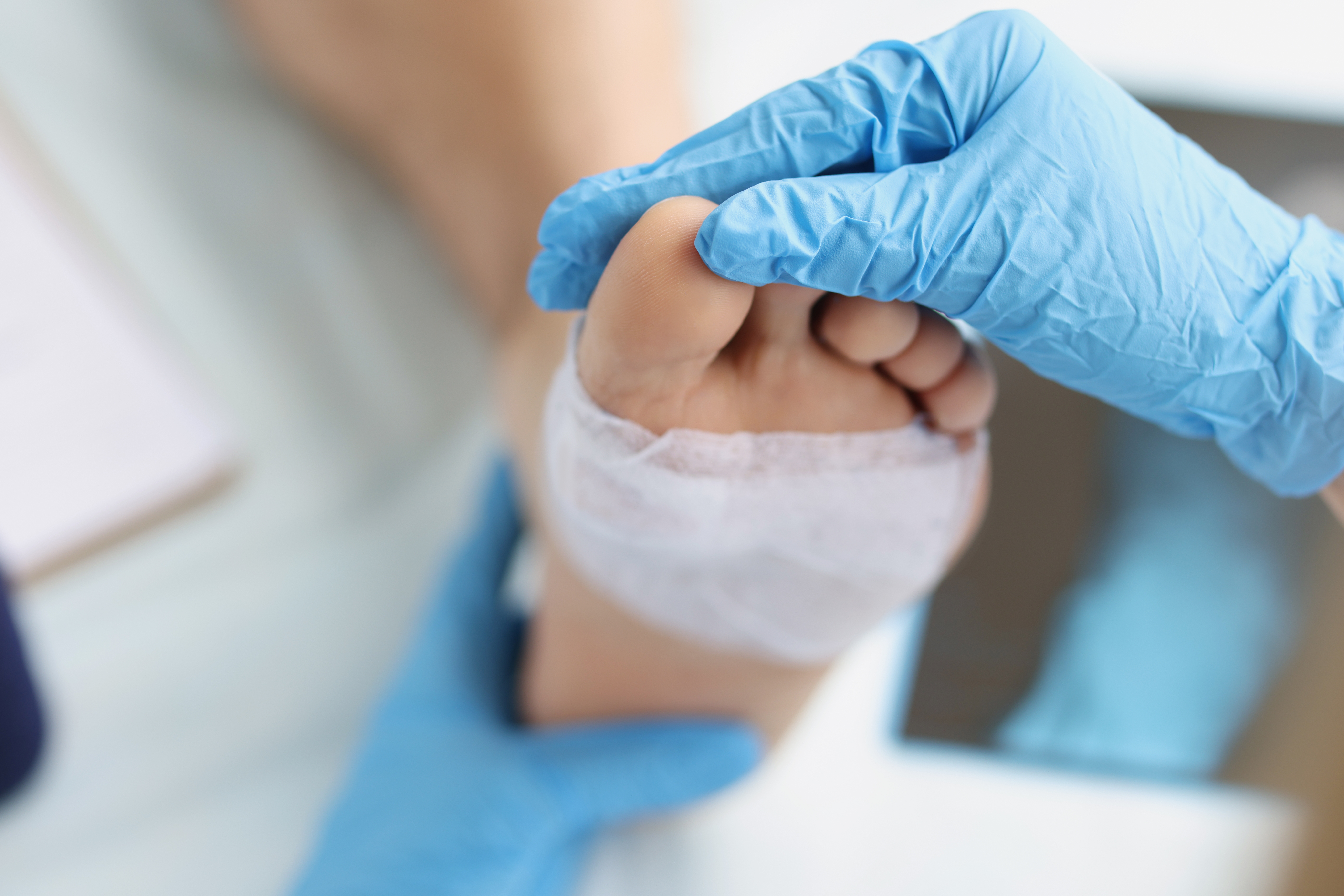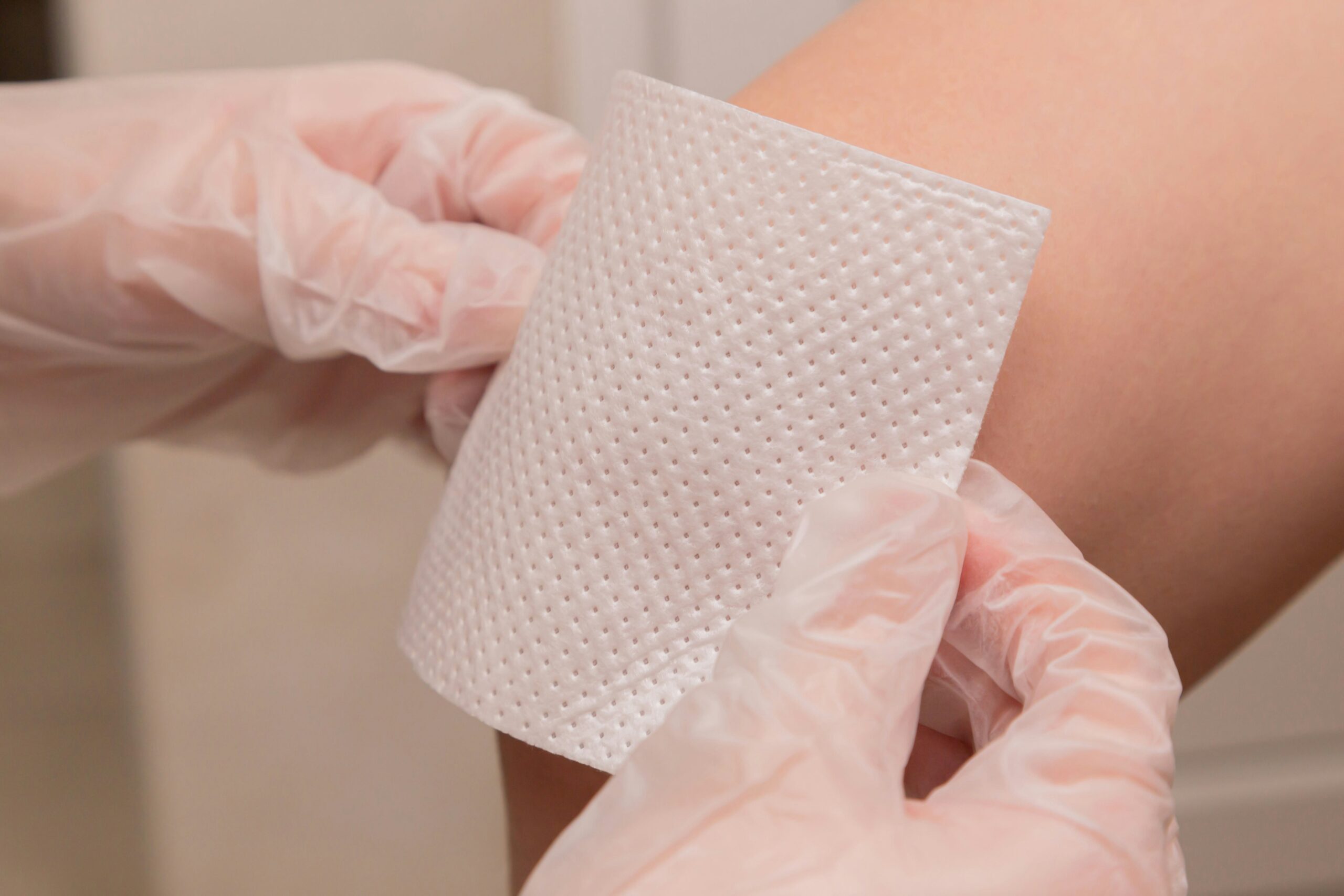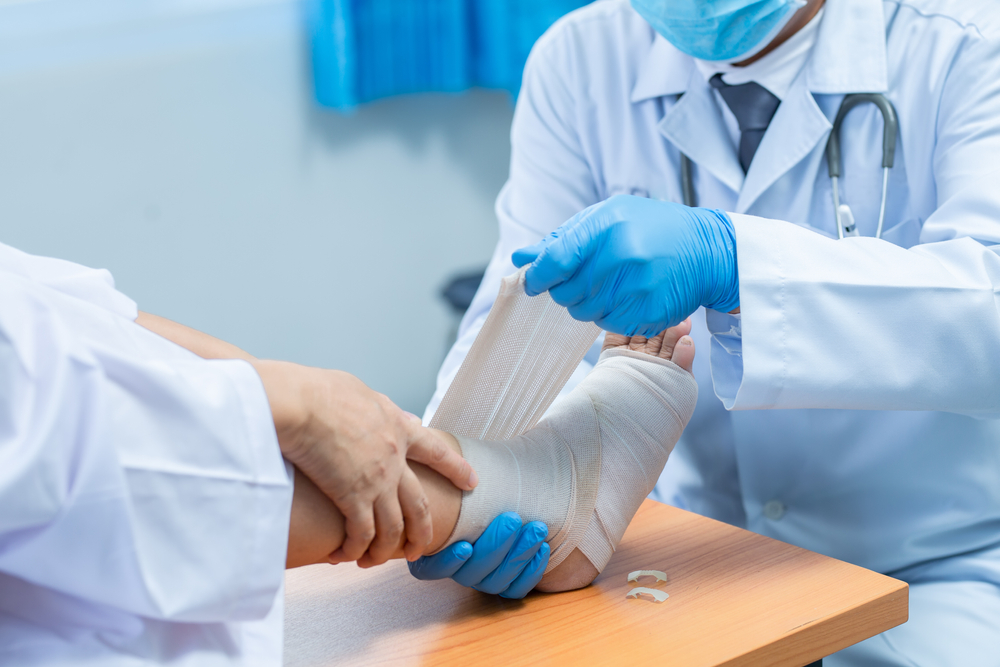Debridement
Debridement
Discover improved wound healing with wound debridement at Innovative Wound Care Specialists.
Wound debridement is a procedure that removes necrotic or infected tissue around a wound to encourage wound healing. Wound debridement can also be performed to remove a foreign material from a wound. Overall, wound debridement aims to prevent infection or a persisting wound by cleaning the area and removing non-viable tissue.
When you have a wound that has shown no signs of improvement, debridement can help essentially “restart” the healing process to help your wound move along in the healing process.
Why Would I Need a Wound Debrided?
There are a few reasons you might need wound debridement. Wound debridement acts as a preventative measure against infection or a worsening wound. Dead tissue can trap bacteria in the wound and cause infection. If an infection develops and is left untreated, it will get worse and increase the risk of amputation. New tissue cannot grow when dead tissue is in the way, so debridement removes the damaged tissue to allow healthy tissue a chance to thrive.
Learn More About Debridement


Wound debridement has healing benefits such as:
Reduced Risk of Infection
Wound debridement removes dead or damaged tissue, which bacteria thrive on. By eliminating this tissue, debridement reduces the environment where bacteria can multiply, lowering the risk of infection. Additionally, debridement helps clear away debris and contaminants that may harbor pathogens, further protecting the wound from complications.
Promoted Healing for Healthy Tissue
When non-viable tissue is removed, healthy tissue has better access to nutrients and oxygen, both essential for healing. Debridement also encourages the formation of new blood vessels, a process called angiogenesis, which enhances circulation to the area. This results in faster tissue repair and regeneration.
Minimized Scarring
By clearing away dead tissue and promoting the growth of healthy tissue, debridement helps wounds heal more neatly, which reduces scarring. Proper wound closure through debridement can also prevent complications like contractures, which can occur when scar tissue tightens, limiting movement or function.
Faster Recovery
With less dead tissue impeding the healing process, the body’s natural healing mechanisms can work more efficiently. Removing barriers like necrotic tissue and foreign matter speeds up wound closure, allowing for faster recovery and less overall tissue damage.
Wound debridement can come with side effects much like other surgical procedures. You may experience:
Delayed healing
Loss of healthy tissue
Bleeding
Pain
Infection
Following debridement, your wound will be monitored for infection. If you notice any of the following signs, make sure to contact your physician immediately:
Fever
Medicine-resistant pain
Redness or swelling
Chills
Excessive bleeding
Wound discharge
Blue, black, or chalky-white skin
New or worsening pain
Wounds That Can Be Treated With Wound Debridement
Any wound that has been slow to heal, has become infected, or has damaged or dead tissue may see improvement after debridement. A few examples of these wounds include:
Chronic wounds
Pressure ulcers
Diabetic leg ulcers
Burns

Wound Debridement Methods
Based on your wound, complication risks, age, and overall health, your doctor will suggest a debridement method that best fits your needs. You may also receive a combination of these methods to give you the best healing results. Options include:
Enzymatic Debridement: An enzyme-based ointment is applied to your wound to soften unhealthy tissue.
Autolytic Debridement: A moisture-retaining dressing is used to cover your wound, allowing your natural bodily fluids and enzymes to soften affected tissues.
Mechanical Debridement: Unviable tissue is removed through a physical process such as cleaning the wound with running water or removing a dried-down wet dressing.
Biological Debridement: Sterilized maggots are used to eat away at dead tissue, leaving only living tissue behind to heal.
Sharp Debridement: A sharp instrument like a scalpel is used to cut away the dead tissue. This method might be done in an operating room depending on the extent of the wound.

In preparation for your procedure, you can expect your doctor to perform a physical exam, measure your wound, and administer pain medication or anesthesia if your debridement method requires it. Enzymatic, autolytic, and biological debridement typically come with a little pain. For mechanical and sharp debridement, you should expect to receive pain medication or anesthesia to help manage the pain.
After having a wound debridement, you will need regular dressing changes to maintain a clean healing environment for your wound. This will also help monitor your healing progress and catch any possible signs of infection early. You can expect you wound to heal within 6 to 12 weeks given you have no complications and don’t need further debridement.
Consult your healthcare provider to determine if your wound needs to be debrided, and which wound debridement method is best for you.
To begin your healing journey at a qualified facility with a professional wound specialist—or simply learn more about wound debridement, reach out to our team at Innovative Wound Care Specialists. We’re here to help.
Contact us by phone (810) 600-2030 or email info@innovativewoundspecialists.com and our friendly staff will assist you every step of the way. Don’t wait any longer to explore the benefits of wound debridement—get started today!
